-
EXECUTIVE SUMMARY
-
Market Overview
-
Key Findings
-
Market Segmentation
-
Competitive Landscape
-
Challenges and Opportunities
-
Future Outlook
-
MARKET INTRODUCTION
-
Definition
-
Scope of the study
- Research Objective
- Assumption
- Limitations
-
RESEARCH METHODOLOGY
-
Overview
-
Data Mining
-
Secondary Research
-
Primary Research
- Primary Interviews and Information Gathering Process
- Breakdown of Primary Respondents
-
Forecasting Model
-
Market Size Estimation
- Bottom-Up Approach
- Top-Down Approach
-
Data Triangulation
-
Validation
-
MARKET DYNAMICS
-
Overview
-
Drivers
-
Restraints
-
Opportunities
-
MARKET FACTOR ANALYSIS
-
Value chain Analysis
-
Porter's Five Forces Analysis
- Bargaining Power of Suppliers
- Bargaining Power of Buyers
- Threat of New Entrants
- Threat of Substitutes
- Intensity of Rivalry
-
COVID-19 Impact Analysis
- Market Impact Analysis
- Regional Impact
- Opportunity and Threat Analysis
-
TORQUE VECTORING MARKET, BY TECHNOLOGY (USD BILLION)
-
Active Torque Vectoring
-
Passive Torque Vectoring
-
Mechanically Controlled Torque Vectoring
-
TORQUE VECTORING MARKET, BY VEHICLE TYPE (USD BILLION)
-
Passenger Cars
-
Commercial Vehicles
-
Motorcycles
-
Heavy Trucks
-
TORQUE VECTORING MARKET, BY DRIVE SYSTEM (USD BILLION)
-
All Wheel Drive
-
Rear Wheel Drive
-
Front Wheel Drive
-
TORQUE VECTORING MARKET, BY END USE (USD BILLION)
-
Personal Use
-
Fleet Use
-
Emergency Services
-
TORQUE VECTORING MARKET, BY REGIONAL (USD BILLION)
-
North America
- US
- Canada
-
Europe
- Germany
- UK
- France
- Russia
- Italy
- Spain
- Rest of Europe
-
APAC
- China
- India
- Japan
- South Korea
- Malaysia
- Thailand
- Indonesia
- Rest of APAC
-
South America
- Brazil
- Mexico
- Argentina
- Rest of South America
-
MEA
- GCC Countries
- South Africa
- Rest of MEA
-
COMPETITIVE LANDSCAPE
-
Overview
-
Competitive Analysis
-
Market share Analysis
-
Major Growth Strategy in the Torque Vectoring Market
-
Competitive Benchmarking
-
Leading Players in Terms of Number of Developments in the Torque Vectoring Market
-
Key developments and growth strategies
- New Product Launch/Service Deployment
- Merger & Acquisitions
- Joint Ventures
-
Major Players Financial Matrix
- Sales and Operating Income
- Major Players R&D Expenditure. 2023
-
COMPANY PROFILES
-
Delphi Technologies
- Financial Overview
- Products Offered
- Key Developments
- SWOT Analysis
- Key Strategies
-
Honda Motor Co
- Financial Overview
- Products Offered
- Key Developments
- SWOT Analysis
- Key Strategies
-
Nissan Motor Corporation
- Financial Overview
- Products Offered
- Key Developments
- SWOT Analysis
- Key Strategies
-
Trelleborg AB
- Financial Overview
- Products Offered
- Key Developments
- SWOT Analysis
- Key Strategies
-
Continental AG
- Financial Overview
- Products Offered
- Key Developments
- SWOT Analysis
- Key Strategies
-
Magna International
- Financial Overview
- Products Offered
- Key Developments
- SWOT Analysis
- Key Strategies
-
RenaultNissanMitsubishi Alliance
- Financial Overview
- Products Offered
- Key Developments
- SWOT Analysis
- Key Strategies
-
ZF Friedrichshafen
- Financial Overview
- Products Offered
- Key Developments
- SWOT Analysis
- Key Strategies
-
Aisin Seiki
- Financial Overview
- Products Offered
- Key Developments
- SWOT Analysis
- Key Strategies
-
Toyota Motor Corporation
- Financial Overview
- Products Offered
- Key Developments
- SWOT Analysis
- Key Strategies
-
Voith GmbH
- Financial Overview
- Products Offered
- Key Developments
- SWOT Analysis
- Key Strategies
-
Hyundai Mobis
- Financial Overview
- Products Offered
- Key Developments
- SWOT Analysis
- Key Strategies
-
Daimler AG
- Financial Overview
- Products Offered
- Key Developments
- SWOT Analysis
- Key Strategies
-
GKN Automotive
- Financial Overview
- Products Offered
- Key Developments
- SWOT Analysis
- Key Strategies
-
BorgWarner
- Financial Overview
- Products Offered
- Key Developments
- SWOT Analysis
- Key Strategies
-
APPENDIX
-
References
-
Related Reports
-
LIST OF TABLES
-
LIST OF ASSUMPTIONS
-
NORTH AMERICA TORQUE VECTORING MARKET SIZE ESTIMATES & FORECAST, BY TECHNOLOGY, 2019-2032 (USD BILLIONS)
-
NORTH AMERICA TORQUE VECTORING MARKET SIZE ESTIMATES & FORECAST, BY VEHICLE TYPE, 2019-2032 (USD BILLIONS)
-
NORTH AMERICA TORQUE VECTORING MARKET SIZE ESTIMATES & FORECAST, BY DRIVE SYSTEM, 2019-2032 (USD BILLIONS)
-
NORTH AMERICA TORQUE VECTORING MARKET SIZE ESTIMATES & FORECAST, BY END USE, 2019-2032 (USD BILLIONS)
-
NORTH AMERICA TORQUE VECTORING MARKET SIZE ESTIMATES & FORECAST, BY REGIONAL, 2019-2032 (USD BILLIONS)
-
US TORQUE VECTORING MARKET SIZE ESTIMATES & FORECAST, BY TECHNOLOGY, 2019-2032 (USD BILLIONS)
-
US TORQUE VECTORING MARKET SIZE ESTIMATES & FORECAST, BY VEHICLE TYPE, 2019-2032 (USD BILLIONS)
-
US TORQUE VECTORING MARKET SIZE ESTIMATES & FORECAST, BY DRIVE SYSTEM, 2019-2032 (USD BILLIONS)
-
US TORQUE VECTORING MARKET SIZE ESTIMATES & FORECAST, BY END USE, 2019-2032 (USD BILLIONS)
-
US TORQUE VECTORING MARKET SIZE ESTIMATES & FORECAST, BY REGIONAL, 2019-2032 (USD BILLIONS)
-
CANADA TORQUE VECTORING MARKET SIZE ESTIMATES & FORECAST, BY TECHNOLOGY, 2019-2032 (USD BILLIONS)
-
CANADA TORQUE VECTORING MARKET SIZE ESTIMATES & FORECAST, BY VEHICLE TYPE, 2019-2032 (USD BILLIONS)
-
CANADA TORQUE VECTORING MARKET SIZE ESTIMATES & FORECAST, BY DRIVE SYSTEM, 2019-2032 (USD BILLIONS)
-
CANADA TORQUE VECTORING MARKET SIZE ESTIMATES & FORECAST, BY END USE, 2019-2032 (USD BILLIONS)
-
CANADA TORQUE VECTORING MARKET SIZE ESTIMATES & FORECAST, BY REGIONAL, 2019-2032 (USD BILLIONS)
-
EUROPE TORQUE VECTORING MARKET SIZE ESTIMATES & FORECAST, BY TECHNOLOGY, 2019-2032 (USD BILLIONS)
-
EUROPE TORQUE VECTORING MARKET SIZE ESTIMATES & FORECAST, BY VEHICLE TYPE, 2019-2032 (USD BILLIONS)
-
EUROPE TORQUE VECTORING MARKET SIZE ESTIMATES & FORECAST, BY DRIVE SYSTEM, 2019-2032 (USD BILLIONS)
-
EUROPE TORQUE VECTORING MARKET SIZE ESTIMATES & FORECAST, BY END USE, 2019-2032 (USD BILLIONS)
-
EUROPE TORQUE VECTORING MARKET SIZE ESTIMATES & FORECAST, BY REGIONAL, 2019-2032 (USD BILLIONS)
-
GERMANY TORQUE VECTORING MARKET SIZE ESTIMATES & FORECAST, BY TECHNOLOGY, 2019-2032 (USD BILLIONS)
-
GERMANY TORQUE VECTORING MARKET SIZE ESTIMATES & FORECAST, BY VEHICLE TYPE, 2019-2032 (USD BILLIONS)
-
GERMANY TORQUE VECTORING MARKET SIZE ESTIMATES & FORECAST, BY DRIVE SYSTEM, 2019-2032 (USD BILLIONS)
-
GERMANY TORQUE VECTORING MARKET SIZE ESTIMATES & FORECAST, BY END USE, 2019-2032 (USD BILLIONS)
-
GERMANY TORQUE VECTORING MARKET SIZE ESTIMATES & FORECAST, BY REGIONAL, 2019-2032 (USD BILLIONS)
-
UK TORQUE VECTORING MARKET SIZE ESTIMATES & FORECAST, BY TECHNOLOGY, 2019-2032 (USD BILLIONS)
-
UK TORQUE VECTORING MARKET SIZE ESTIMATES & FORECAST, BY VEHICLE TYPE, 2019-2032 (USD BILLIONS)
-
UK TORQUE VECTORING MARKET SIZE ESTIMATES & FORECAST, BY DRIVE SYSTEM, 2019-2032 (USD BILLIONS)
-
UK TORQUE VECTORING MARKET SIZE ESTIMATES & FORECAST, BY END USE, 2019-2032 (USD BILLIONS)
-
UK TORQUE VECTORING MARKET SIZE ESTIMATES & FORECAST, BY REGIONAL, 2019-2032 (USD BILLIONS)
-
FRANCE TORQUE VECTORING MARKET SIZE ESTIMATES & FORECAST, BY TECHNOLOGY, 2019-2032 (USD BILLIONS)
-
FRANCE TORQUE VECTORING MARKET SIZE ESTIMATES & FORECAST, BY VEHICLE TYPE, 2019-2032 (USD BILLIONS)
-
FRANCE TORQUE VECTORING MARKET SIZE ESTIMATES & FORECAST, BY DRIVE SYSTEM, 2019-2032 (USD BILLIONS)
-
FRANCE TORQUE VECTORING MARKET SIZE ESTIMATES & FORECAST, BY END USE, 2019-2032 (USD BILLIONS)
-
FRANCE TORQUE VECTORING MARKET SIZE ESTIMATES & FORECAST, BY REGIONAL, 2019-2032 (USD BILLIONS)
-
RUSSIA TORQUE VECTORING MARKET SIZE ESTIMATES & FORECAST, BY TECHNOLOGY, 2019-2032 (USD BILLIONS)
-
RUSSIA TORQUE VECTORING MARKET SIZE ESTIMATES & FORECAST, BY VEHICLE TYPE, 2019-2032 (USD BILLIONS)
-
RUSSIA TORQUE VECTORING MARKET SIZE ESTIMATES & FORECAST, BY DRIVE SYSTEM, 2019-2032 (USD BILLIONS)
-
RUSSIA TORQUE VECTORING MARKET SIZE ESTIMATES & FORECAST, BY END USE, 2019-2032 (USD BILLIONS)
-
RUSSIA TORQUE VECTORING MARKET SIZE ESTIMATES & FORECAST, BY REGIONAL, 2019-2032 (USD BILLIONS)
-
ITALY TORQUE VECTORING MARKET SIZE ESTIMATES & FORECAST, BY TECHNOLOGY, 2019-2032 (USD BILLIONS)
-
ITALY TORQUE VECTORING MARKET SIZE ESTIMATES & FORECAST, BY VEHICLE TYPE, 2019-2032 (USD BILLIONS)
-
ITALY TORQUE VECTORING MARKET SIZE ESTIMATES & FORECAST, BY DRIVE SYSTEM, 2019-2032 (USD BILLIONS)
-
ITALY TORQUE VECTORING MARKET SIZE ESTIMATES & FORECAST, BY END USE, 2019-2032 (USD BILLIONS)
-
ITALY TORQUE VECTORING MARKET SIZE ESTIMATES & FORECAST, BY REGIONAL, 2019-2032 (USD BILLIONS)
-
SPAIN TORQUE VECTORING MARKET SIZE ESTIMATES & FORECAST, BY TECHNOLOGY, 2019-2032 (USD BILLIONS)
-
SPAIN TORQUE VECTORING MARKET SIZE ESTIMATES & FORECAST, BY VEHICLE TYPE, 2019-2032 (USD BILLIONS)
-
SPAIN TORQUE VECTORING MARKET SIZE ESTIMATES & FORECAST, BY DRIVE SYSTEM, 2019-2032 (USD BILLIONS)
-
SPAIN TORQUE VECTORING MARKET SIZE ESTIMATES & FORECAST, BY END USE, 2019-2032 (USD BILLIONS)
-
SPAIN TORQUE VECTORING MARKET SIZE ESTIMATES & FORECAST, BY REGIONAL, 2019-2032 (USD BILLIONS)
-
REST OF EUROPE TORQUE VECTORING MARKET SIZE ESTIMATES & FORECAST, BY TECHNOLOGY, 2019-2032 (USD BILLIONS)
-
REST OF EUROPE TORQUE VECTORING MARKET SIZE ESTIMATES & FORECAST, BY VEHICLE TYPE, 2019-2032 (USD BILLIONS)
-
REST OF EUROPE TORQUE VECTORING MARKET SIZE ESTIMATES & FORECAST, BY DRIVE SYSTEM, 2019-2032 (USD BILLIONS)
-
REST OF EUROPE TORQUE VECTORING MARKET SIZE ESTIMATES & FORECAST, BY END USE, 2019-2032 (USD BILLIONS)
-
REST OF EUROPE TORQUE VECTORING MARKET SIZE ESTIMATES & FORECAST, BY REGIONAL, 2019-2032 (USD BILLIONS)
-
APAC TORQUE VECTORING MARKET SIZE ESTIMATES & FORECAST, BY TECHNOLOGY, 2019-2032 (USD BILLIONS)
-
APAC TORQUE VECTORING MARKET SIZE ESTIMATES & FORECAST, BY VEHICLE TYPE, 2019-2032 (USD BILLIONS)
-
APAC TORQUE VECTORING MARKET SIZE ESTIMATES & FORECAST, BY DRIVE SYSTEM, 2019-2032 (USD BILLIONS)
-
APAC TORQUE VECTORING MARKET SIZE ESTIMATES & FORECAST, BY END USE, 2019-2032 (USD BILLIONS)
-
APAC TORQUE VECTORING MARKET SIZE ESTIMATES & FORECAST, BY REGIONAL, 2019-2032 (USD BILLIONS)
-
CHINA TORQUE VECTORING MARKET SIZE ESTIMATES & FORECAST, BY TECHNOLOGY, 2019-2032 (USD BILLIONS)
-
CHINA TORQUE VECTORING MARKET SIZE ESTIMATES & FORECAST, BY VEHICLE TYPE, 2019-2032 (USD BILLIONS)
-
CHINA TORQUE VECTORING MARKET SIZE ESTIMATES & FORECAST, BY DRIVE SYSTEM, 2019-2032 (USD BILLIONS)
-
CHINA TORQUE VECTORING MARKET SIZE ESTIMATES & FORECAST, BY END USE, 2019-2032 (USD BILLIONS)
-
CHINA TORQUE VECTORING MARKET SIZE ESTIMATES & FORECAST, BY REGIONAL, 2019-2032 (USD BILLIONS)
-
INDIA TORQUE VECTORING MARKET SIZE ESTIMATES & FORECAST, BY TECHNOLOGY, 2019-2032 (USD BILLIONS)
-
INDIA TORQUE VECTORING MARKET SIZE ESTIMATES & FORECAST, BY VEHICLE TYPE, 2019-2032 (USD BILLIONS)
-
INDIA TORQUE VECTORING MARKET SIZE ESTIMATES & FORECAST, BY DRIVE SYSTEM, 2019-2032 (USD BILLIONS)
-
INDIA TORQUE VECTORING MARKET SIZE ESTIMATES & FORECAST, BY END USE, 2019-2032 (USD BILLIONS)
-
INDIA TORQUE VECTORING MARKET SIZE ESTIMATES & FORECAST, BY REGIONAL, 2019-2032 (USD BILLIONS)
-
JAPAN TORQUE VECTORING MARKET SIZE ESTIMATES & FORECAST, BY TECHNOLOGY, 2019-2032 (USD BILLIONS)
-
JAPAN TORQUE VECTORING MARKET SIZE ESTIMATES & FORECAST, BY VEHICLE TYPE, 2019-2032 (USD BILLIONS)
-
JAPAN TORQUE VECTORING MARKET SIZE ESTIMATES & FORECAST, BY DRIVE SYSTEM, 2019-2032 (USD BILLIONS)
-
JAPAN TORQUE VECTORING MARKET SIZE ESTIMATES & FORECAST, BY END USE, 2019-2032 (USD BILLIONS)
-
JAPAN TORQUE VECTORING MARKET SIZE ESTIMATES & FORECAST, BY REGIONAL, 2019-2032 (USD BILLIONS)
-
SOUTH KOREA TORQUE VECTORING MARKET SIZE ESTIMATES & FORECAST, BY TECHNOLOGY, 2019-2032 (USD BILLIONS)
-
SOUTH KOREA TORQUE VECTORING MARKET SIZE ESTIMATES & FORECAST, BY VEHICLE TYPE, 2019-2032 (USD BILLIONS)
-
SOUTH KOREA TORQUE VECTORING MARKET SIZE ESTIMATES & FORECAST, BY DRIVE SYSTEM, 2019-2032 (USD BILLIONS)
-
SOUTH KOREA TORQUE VECTORING MARKET SIZE ESTIMATES & FORECAST, BY END USE, 2019-2032 (USD BILLIONS)
-
SOUTH KOREA TORQUE VECTORING MARKET SIZE ESTIMATES & FORECAST, BY REGIONAL, 2019-2032 (USD BILLIONS)
-
MALAYSIA TORQUE VECTORING MARKET SIZE ESTIMATES & FORECAST, BY TECHNOLOGY, 2019-2032 (USD BILLIONS)
-
MALAYSIA TORQUE VECTORING MARKET SIZE ESTIMATES & FORECAST, BY VEHICLE TYPE, 2019-2032 (USD BILLIONS)
-
MALAYSIA TORQUE VECTORING MARKET SIZE ESTIMATES & FORECAST, BY DRIVE SYSTEM, 2019-2032 (USD BILLIONS)
-
MALAYSIA TORQUE VECTORING MARKET SIZE ESTIMATES & FORECAST, BY END USE, 2019-2032 (USD BILLIONS)
-
MALAYSIA TORQUE VECTORING MARKET SIZE ESTIMATES & FORECAST, BY REGIONAL, 2019-2032 (USD BILLIONS)
-
THAILAND TORQUE VECTORING MARKET SIZE ESTIMATES & FORECAST, BY TECHNOLOGY, 2019-2032 (USD BILLIONS)
-
THAILAND TORQUE VECTORING MARKET SIZE ESTIMATES & FORECAST, BY VEHICLE TYPE, 2019-2032 (USD BILLIONS)
-
THAILAND TORQUE VECTORING MARKET SIZE ESTIMATES & FORECAST, BY DRIVE SYSTEM, 2019-2032 (USD BILLIONS)
-
THAILAND TORQUE VECTORING MARKET SIZE ESTIMATES & FORECAST, BY END USE, 2019-2032 (USD BILLIONS)
-
THAILAND TORQUE VECTORING MARKET SIZE ESTIMATES & FORECAST, BY REGIONAL, 2019-2032 (USD BILLIONS)
-
INDONESIA TORQUE VECTORING MARKET SIZE ESTIMATES & FORECAST, BY TECHNOLOGY, 2019-2032 (USD BILLIONS)
-
INDONESIA TORQUE VECTORING MARKET SIZE ESTIMATES & FORECAST, BY VEHICLE TYPE, 2019-2032 (USD BILLIONS)
-
INDONESIA TORQUE VECTORING MARKET SIZE ESTIMATES & FORECAST, BY DRIVE SYSTEM, 2019-2032 (USD BILLIONS)
-
INDONESIA TORQUE VECTORING MARKET SIZE ESTIMATES & FORECAST, BY END USE, 2019-2032 (USD BILLIONS)
-
INDONESIA TORQUE VECTORING MARKET SIZE ESTIMATES & FORECAST, BY REGIONAL, 2019-2032 (USD BILLIONS)
-
REST OF APAC TORQUE VECTORING MARKET SIZE ESTIMATES & FORECAST, BY TECHNOLOGY, 2019-2032 (USD BILLIONS)
-
REST OF APAC TORQUE VECTORING MARKET SIZE ESTIMATES & FORECAST, BY VEHICLE TYPE, 2019-2032 (USD BILLIONS)
-
REST OF APAC TORQUE VECTORING MARKET SIZE ESTIMATES & FORECAST, BY DRIVE SYSTEM, 2019-2032 (USD BILLIONS)
-
REST OF APAC TORQUE VECTORING MARKET SIZE ESTIMATES & FORECAST, BY END USE, 2019-2032 (USD BILLIONS)
-
REST OF APAC TORQUE VECTORING MARKET SIZE ESTIMATES & FORECAST, BY REGIONAL, 2019-2032 (USD BILLIONS)
-
SOUTH AMERICA TORQUE VECTORING MARKET SIZE ESTIMATES & FORECAST, BY TECHNOLOGY, 2019-2032 (USD BILLIONS)
-
SOUTH AMERICA TORQUE VECTORING MARKET SIZE ESTIMATES & FORECAST, BY VEHICLE TYPE, 2019-2032 (USD BILLIONS)
-
SOUTH AMERICA TORQUE VECTORING MARKET SIZE ESTIMATES & FORECAST, BY DRIVE SYSTEM, 2019-2032 (USD BILLIONS)
-
SOUTH AMERICA TORQUE VECTORING MARKET SIZE ESTIMATES & FORECAST, BY END USE, 2019-2032 (USD BILLIONS)
-
SOUTH AMERICA TORQUE VECTORING MARKET SIZE ESTIMATES & FORECAST, BY REGIONAL, 2019-2032 (USD BILLIONS)
-
BRAZIL TORQUE VECTORING MARKET SIZE ESTIMATES & FORECAST, BY TECHNOLOGY, 2019-2032 (USD BILLIONS)
-
BRAZIL TORQUE VECTORING MARKET SIZE ESTIMATES & FORECAST, BY VEHICLE TYPE, 2019-2032 (USD BILLIONS)
-
BRAZIL TORQUE VECTORING MARKET SIZE ESTIMATES & FORECAST, BY DRIVE SYSTEM, 2019-2032 (USD BILLIONS)
-
BRAZIL TORQUE VECTORING MARKET SIZE ESTIMATES & FORECAST, BY END USE, 2019-2032 (USD BILLIONS)
-
BRAZIL TORQUE VECTORING MARKET SIZE ESTIMATES & FORECAST, BY REGIONAL, 2019-2032 (USD BILLIONS)
-
MEXICO TORQUE VECTORING MARKET SIZE ESTIMATES & FORECAST, BY TECHNOLOGY, 2019-2032 (USD BILLIONS)
-
MEXICO TORQUE VECTORING MARKET SIZE ESTIMATES & FORECAST, BY VEHICLE TYPE, 2019-2032 (USD BILLIONS)
-
MEXICO TORQUE VECTORING MARKET SIZE ESTIMATES & FORECAST, BY DRIVE SYSTEM, 2019-2032 (USD BILLIONS)
-
MEXICO TORQUE VECTORING MARKET SIZE ESTIMATES & FORECAST, BY END USE, 2019-2032 (USD BILLIONS)
-
MEXICO TORQUE VECTORING MARKET SIZE ESTIMATES & FORECAST, BY REGIONAL, 2019-2032 (USD BILLIONS)
-
ARGENTINA TORQUE VECTORING MARKET SIZE ESTIMATES & FORECAST, BY TECHNOLOGY, 2019-2032 (USD BILLIONS)
-
ARGENTINA TORQUE VECTORING MARKET SIZE ESTIMATES & FORECAST, BY VEHICLE TYPE, 2019-2032 (USD BILLIONS)
-
ARGENTINA TORQUE VECTORING MARKET SIZE ESTIMATES & FORECAST, BY DRIVE SYSTEM, 2019-2032 (USD BILLIONS)
-
ARGENTINA TORQUE VECTORING MARKET SIZE ESTIMATES & FORECAST, BY END USE, 2019-2032 (USD BILLIONS)
-
ARGENTINA TORQUE VECTORING MARKET SIZE ESTIMATES & FORECAST, BY REGIONAL, 2019-2032 (USD BILLIONS)
-
REST OF SOUTH AMERICA TORQUE VECTORING MARKET SIZE ESTIMATES & FORECAST, BY TECHNOLOGY, 2019-2032 (USD BILLIONS)
-
REST OF SOUTH AMERICA TORQUE VECTORING MARKET SIZE ESTIMATES & FORECAST, BY VEHICLE TYPE, 2019-2032 (USD BILLIONS)
-
REST OF SOUTH AMERICA TORQUE VECTORING MARKET SIZE ESTIMATES & FORECAST, BY DRIVE SYSTEM, 2019-2032 (USD BILLIONS)
-
REST OF SOUTH AMERICA TORQUE VECTORING MARKET SIZE ESTIMATES & FORECAST, BY END USE, 2019-2032 (USD BILLIONS)
-
REST OF SOUTH AMERICA TORQUE VECTORING MARKET SIZE ESTIMATES & FORECAST, BY REGIONAL, 2019-2032 (USD BILLIONS)
-
MEA TORQUE VECTORING MARKET SIZE ESTIMATES & FORECAST, BY TECHNOLOGY, 2019-2032 (USD BILLIONS)
-
MEA TORQUE VECTORING MARKET SIZE ESTIMATES & FORECAST, BY VEHICLE TYPE, 2019-2032 (USD BILLIONS)
-
MEA TORQUE VECTORING MARKET SIZE ESTIMATES & FORECAST, BY DRIVE SYSTEM, 2019-2032 (USD BILLIONS)
-
MEA TORQUE VECTORING MARKET SIZE ESTIMATES & FORECAST, BY END USE, 2019-2032 (USD BILLIONS)
-
MEA TORQUE VECTORING MARKET SIZE ESTIMATES & FORECAST, BY REGIONAL, 2019-2032 (USD BILLIONS)
-
GCC COUNTRIES TORQUE VECTORING MARKET SIZE ESTIMATES & FORECAST, BY TECHNOLOGY, 2019-2032 (USD BILLIONS)
-
GCC COUNTRIES TORQUE VECTORING MARKET SIZE ESTIMATES & FORECAST, BY VEHICLE TYPE, 2019-2032 (USD BILLIONS)
-
GCC COUNTRIES TORQUE VECTORING MARKET SIZE ESTIMATES & FORECAST, BY DRIVE SYSTEM, 2019-2032 (USD BILLIONS)
-
GCC COUNTRIES TORQUE VECTORING MARKET SIZE ESTIMATES & FORECAST, BY END USE, 2019-2032 (USD BILLIONS)
-
GCC COUNTRIES TORQUE VECTORING MARKET SIZE ESTIMATES & FORECAST, BY REGIONAL, 2019-2032 (USD BILLIONS)
-
SOUTH AFRICA TORQUE VECTORING MARKET SIZE ESTIMATES & FORECAST, BY TECHNOLOGY, 2019-2032 (USD BILLIONS)
-
SOUTH AFRICA TORQUE VECTORING MARKET SIZE ESTIMATES & FORECAST, BY VEHICLE TYPE, 2019-2032 (USD BILLIONS)
-
SOUTH AFRICA TORQUE VECTORING MARKET SIZE ESTIMATES & FORECAST, BY DRIVE SYSTEM, 2019-2032 (USD BILLIONS)
-
SOUTH AFRICA TORQUE VECTORING MARKET SIZE ESTIMATES & FORECAST, BY END USE, 2019-2032 (USD BILLIONS)
-
SOUTH AFRICA TORQUE VECTORING MARKET SIZE ESTIMATES & FORECAST, BY REGIONAL, 2019-2032 (USD BILLIONS)
-
REST OF MEA TORQUE VECTORING MARKET SIZE ESTIMATES & FORECAST, BY TECHNOLOGY, 2019-2032 (USD BILLIONS)
-
REST OF MEA TORQUE VECTORING MARKET SIZE ESTIMATES & FORECAST, BY VEHICLE TYPE, 2019-2032 (USD BILLIONS)
-
REST OF MEA TORQUE VECTORING MARKET SIZE ESTIMATES & FORECAST, BY DRIVE SYSTEM, 2019-2032 (USD BILLIONS)
-
REST OF MEA TORQUE VECTORING MARKET SIZE ESTIMATES & FORECAST, BY END USE, 2019-2032 (USD BILLIONS)
-
REST OF MEA TORQUE VECTORING MARKET SIZE ESTIMATES & FORECAST, BY REGIONAL, 2019-2032 (USD BILLIONS)
-
PRODUCT LAUNCH/PRODUCT DEVELOPMENT/APPROVAL
-
ACQUISITION/PARTNERSHIP
-
LIST OF FIGURES
-
MARKET SYNOPSIS
-
NORTH AMERICA TORQUE VECTORING MARKET ANALYSIS
-
US TORQUE VECTORING MARKET ANALYSIS BY TECHNOLOGY
-
US TORQUE VECTORING MARKET ANALYSIS BY VEHICLE TYPE
-
US TORQUE VECTORING MARKET ANALYSIS BY DRIVE SYSTEM
-
US TORQUE VECTORING MARKET ANALYSIS BY END USE
-
US TORQUE VECTORING MARKET ANALYSIS BY REGIONAL
-
CANADA TORQUE VECTORING MARKET ANALYSIS BY TECHNOLOGY
-
CANADA TORQUE VECTORING MARKET ANALYSIS BY VEHICLE TYPE
-
CANADA TORQUE VECTORING MARKET ANALYSIS BY DRIVE SYSTEM
-
CANADA TORQUE VECTORING MARKET ANALYSIS BY END USE
-
CANADA TORQUE VECTORING MARKET ANALYSIS BY REGIONAL
-
EUROPE TORQUE VECTORING MARKET ANALYSIS
-
GERMANY TORQUE VECTORING MARKET ANALYSIS BY TECHNOLOGY
-
GERMANY TORQUE VECTORING MARKET ANALYSIS BY VEHICLE TYPE
-
GERMANY TORQUE VECTORING MARKET ANALYSIS BY DRIVE SYSTEM
-
GERMANY TORQUE VECTORING MARKET ANALYSIS BY END USE
-
GERMANY TORQUE VECTORING MARKET ANALYSIS BY REGIONAL
-
UK TORQUE VECTORING MARKET ANALYSIS BY TECHNOLOGY
-
UK TORQUE VECTORING MARKET ANALYSIS BY VEHICLE TYPE
-
UK TORQUE VECTORING MARKET ANALYSIS BY DRIVE SYSTEM
-
UK TORQUE VECTORING MARKET ANALYSIS BY END USE
-
UK TORQUE VECTORING MARKET ANALYSIS BY REGIONAL
-
FRANCE TORQUE VECTORING MARKET ANALYSIS BY TECHNOLOGY
-
FRANCE TORQUE VECTORING MARKET ANALYSIS BY VEHICLE TYPE
-
FRANCE TORQUE VECTORING MARKET ANALYSIS BY DRIVE SYSTEM
-
FRANCE TORQUE VECTORING MARKET ANALYSIS BY END USE
-
FRANCE TORQUE VECTORING MARKET ANALYSIS BY REGIONAL
-
RUSSIA TORQUE VECTORING MARKET ANALYSIS BY TECHNOLOGY
-
RUSSIA TORQUE VECTORING MARKET ANALYSIS BY VEHICLE TYPE
-
RUSSIA TORQUE VECTORING MARKET ANALYSIS BY DRIVE SYSTEM
-
RUSSIA TORQUE VECTORING MARKET ANALYSIS BY END USE
-
RUSSIA TORQUE VECTORING MARKET ANALYSIS BY REGIONAL
-
ITALY TORQUE VECTORING MARKET ANALYSIS BY TECHNOLOGY
-
ITALY TORQUE VECTORING MARKET ANALYSIS BY VEHICLE TYPE
-
ITALY TORQUE VECTORING MARKET ANALYSIS BY DRIVE SYSTEM
-
ITALY TORQUE VECTORING MARKET ANALYSIS BY END USE
-
ITALY TORQUE VECTORING MARKET ANALYSIS BY REGIONAL
-
SPAIN TORQUE VECTORING MARKET ANALYSIS BY TECHNOLOGY
-
SPAIN TORQUE VECTORING MARKET ANALYSIS BY VEHICLE TYPE
-
SPAIN TORQUE VECTORING MARKET ANALYSIS BY DRIVE SYSTEM
-
SPAIN TORQUE VECTORING MARKET ANALYSIS BY END USE
-
SPAIN TORQUE VECTORING MARKET ANALYSIS BY REGIONAL
-
REST OF EUROPE TORQUE VECTORING MARKET ANALYSIS BY TECHNOLOGY
-
REST OF EUROPE TORQUE VECTORING MARKET ANALYSIS BY VEHICLE TYPE
-
REST OF EUROPE TORQUE VECTORING MARKET ANALYSIS BY DRIVE SYSTEM
-
REST OF EUROPE TORQUE VECTORING MARKET ANALYSIS BY END USE
-
REST OF EUROPE TORQUE VECTORING MARKET ANALYSIS BY REGIONAL
-
APAC TORQUE VECTORING MARKET ANALYSIS
-
CHINA TORQUE VECTORING MARKET ANALYSIS BY TECHNOLOGY
-
CHINA TORQUE VECTORING MARKET ANALYSIS BY VEHICLE TYPE
-
CHINA TORQUE VECTORING MARKET ANALYSIS BY DRIVE SYSTEM
-
CHINA TORQUE VECTORING MARKET ANALYSIS BY END USE
-
CHINA TORQUE VECTORING MARKET ANALYSIS BY REGIONAL
-
INDIA TORQUE VECTORING MARKET ANALYSIS BY TECHNOLOGY
-
INDIA TORQUE VECTORING MARKET ANALYSIS BY VEHICLE TYPE
-
INDIA TORQUE VECTORING MARKET ANALYSIS BY DRIVE SYSTEM
-
INDIA TORQUE VECTORING MARKET ANALYSIS BY END USE
-
INDIA TORQUE VECTORING MARKET ANALYSIS BY REGIONAL
-
JAPAN TORQUE VECTORING MARKET ANALYSIS BY TECHNOLOGY
-
JAPAN TORQUE VECTORING MARKET ANALYSIS BY VEHICLE TYPE
-
JAPAN TORQUE VECTORING MARKET ANALYSIS BY DRIVE SYSTEM
-
JAPAN TORQUE VECTORING MARKET ANALYSIS BY END USE
-
JAPAN TORQUE VECTORING MARKET ANALYSIS BY REGIONAL
-
SOUTH KOREA TORQUE VECTORING MARKET ANALYSIS BY TECHNOLOGY
-
SOUTH KOREA TORQUE VECTORING MARKET ANALYSIS BY VEHICLE TYPE
-
SOUTH KOREA TORQUE VECTORING MARKET ANALYSIS BY DRIVE SYSTEM
-
SOUTH KOREA TORQUE VECTORING MARKET ANALYSIS BY END USE
-
SOUTH KOREA TORQUE VECTORING MARKET ANALYSIS BY REGIONAL
-
MALAYSIA TORQUE VECTORING MARKET ANALYSIS BY TECHNOLOGY
-
MALAYSIA TORQUE VECTORING MARKET ANALYSIS BY VEHICLE TYPE
-
MALAYSIA TORQUE VECTORING MARKET ANALYSIS BY DRIVE SYSTEM
-
MALAYSIA TORQUE VECTORING MARKET ANALYSIS BY END USE
-
MALAYSIA TORQUE VECTORING MARKET ANALYSIS BY REGIONAL
-
THAILAND TORQUE VECTORING MARKET ANALYSIS BY TECHNOLOGY
-
THAILAND TORQUE VECTORING MARKET ANALYSIS BY VEHICLE TYPE
-
THAILAND TORQUE VECTORING MARKET ANALYSIS BY DRIVE SYSTEM
-
THAILAND TORQUE VECTORING MARKET ANALYSIS BY END USE
-
THAILAND TORQUE VECTORING MARKET ANALYSIS BY REGIONAL
-
INDONESIA TORQUE VECTORING MARKET ANALYSIS BY TECHNOLOGY
-
INDONESIA TORQUE VECTORING MARKET ANALYSIS BY VEHICLE TYPE
-
INDONESIA TORQUE VECTORING MARKET ANALYSIS BY DRIVE SYSTEM
-
INDONESIA TORQUE VECTORING MARKET ANALYSIS BY END USE
-
INDONESIA TORQUE VECTORING MARKET ANALYSIS BY REGIONAL
-
REST OF APAC TORQUE VECTORING MARKET ANALYSIS BY TECHNOLOGY
-
REST OF APAC TORQUE VECTORING MARKET ANALYSIS BY VEHICLE TYPE
-
REST OF APAC TORQUE VECTORING MARKET ANALYSIS BY DRIVE SYSTEM
-
REST OF APAC TORQUE VECTORING MARKET ANALYSIS BY END USE
-
REST OF APAC TORQUE VECTORING MARKET ANALYSIS BY REGIONAL
-
SOUTH AMERICA TORQUE VECTORING MARKET ANALYSIS
-
BRAZIL TORQUE VECTORING MARKET ANALYSIS BY TECHNOLOGY
-
BRAZIL TORQUE VECTORING MARKET ANALYSIS BY VEHICLE TYPE
-
BRAZIL TORQUE VECTORING MARKET ANALYSIS BY DRIVE SYSTEM
-
BRAZIL TORQUE VECTORING MARKET ANALYSIS BY END USE
-
BRAZIL TORQUE VECTORING MARKET ANALYSIS BY REGIONAL
-
MEXICO TORQUE VECTORING MARKET ANALYSIS BY TECHNOLOGY
-
MEXICO TORQUE VECTORING MARKET ANALYSIS BY VEHICLE TYPE
-
MEXICO TORQUE VECTORING MARKET ANALYSIS BY DRIVE SYSTEM
-
MEXICO TORQUE VECTORING MARKET ANALYSIS BY END USE
-
MEXICO TORQUE VECTORING MARKET ANALYSIS BY REGIONAL
-
ARGENTINA TORQUE VECTORING MARKET ANALYSIS BY TECHNOLOGY
-
ARGENTINA TORQUE VECTORING MARKET ANALYSIS BY VEHICLE TYPE
-
ARGENTINA TORQUE VECTORING MARKET ANALYSIS BY DRIVE SYSTEM
-
ARGENTINA TORQUE VECTORING MARKET ANALYSIS BY END USE
-
ARGENTINA TORQUE VECTORING MARKET ANALYSIS BY REGIONAL
-
REST OF SOUTH AMERICA TORQUE VECTORING MARKET ANALYSIS BY TECHNOLOGY
-
REST OF SOUTH AMERICA TORQUE VECTORING MARKET ANALYSIS BY VEHICLE TYPE
-
REST OF SOUTH AMERICA TORQUE VECTORING MARKET ANALYSIS BY DRIVE SYSTEM
-
REST OF SOUTH AMERICA TORQUE VECTORING MARKET ANALYSIS BY END USE
-
REST OF SOUTH AMERICA TORQUE VECTORING MARKET ANALYSIS BY REGIONAL
-
MEA TORQUE VECTORING MARKET ANALYSIS
-
GCC COUNTRIES TORQUE VECTORING MARKET ANALYSIS BY TECHNOLOGY
-
GCC COUNTRIES TORQUE VECTORING MARKET ANALYSIS BY VEHICLE TYPE
-
GCC COUNTRIES TORQUE VECTORING MARKET ANALYSIS BY DRIVE SYSTEM
-
GCC COUNTRIES TORQUE VECTORING MARKET ANALYSIS BY END USE
-
GCC COUNTRIES TORQUE VECTORING MARKET ANALYSIS BY REGIONAL
-
SOUTH AFRICA TORQUE VECTORING MARKET ANALYSIS BY TECHNOLOGY
-
SOUTH AFRICA TORQUE VECTORING MARKET ANALYSIS BY VEHICLE TYPE
-
SOUTH AFRICA TORQUE VECTORING MARKET ANALYSIS BY DRIVE SYSTEM
-
SOUTH AFRICA TORQUE VECTORING MARKET ANALYSIS BY END USE
-
SOUTH AFRICA TORQUE VECTORING MARKET ANALYSIS BY REG

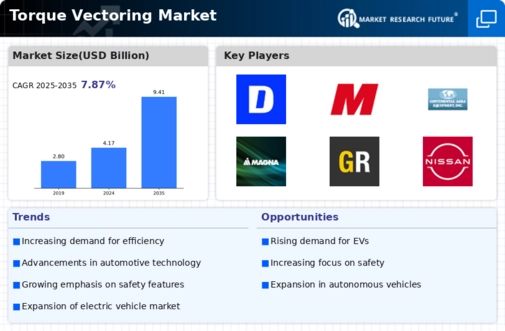
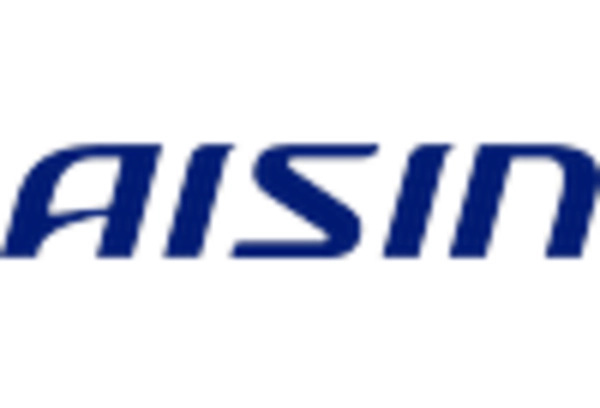
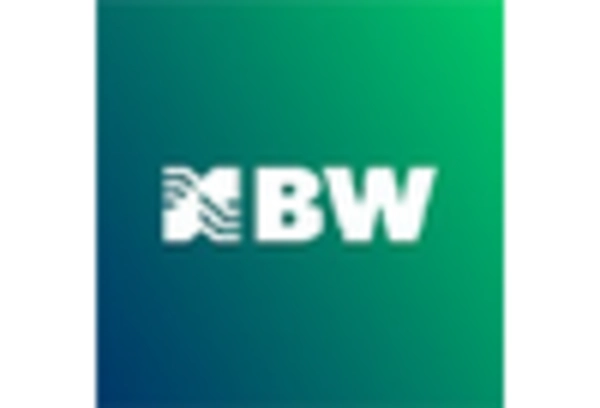
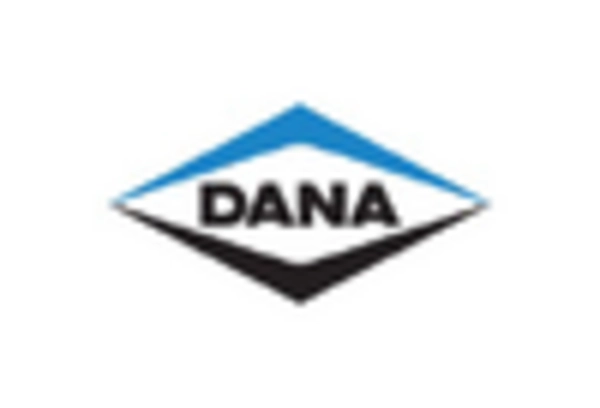
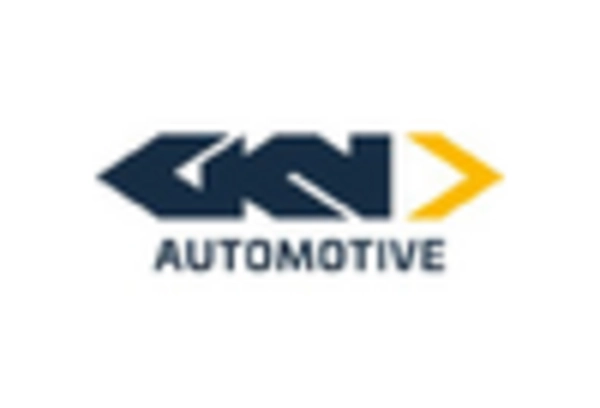
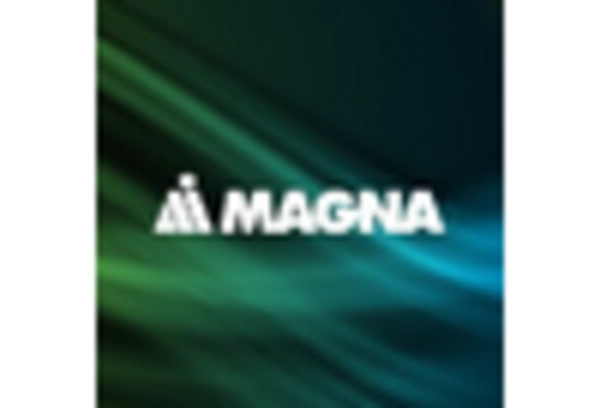
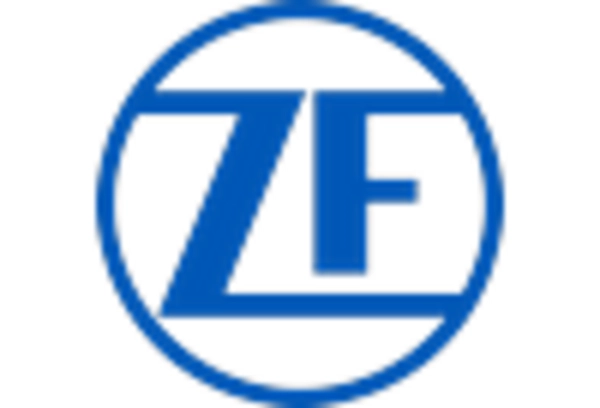









Leave a Comment